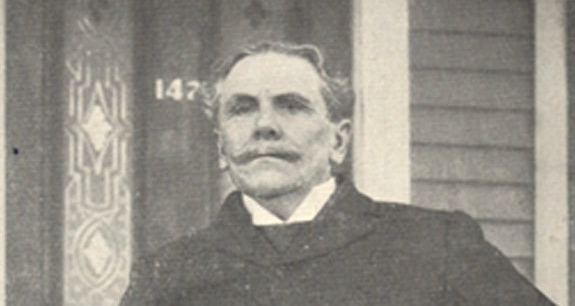Cyrus Ingerson Scofield was born this day (August 19) in 1843, and died in 1921. A confederate veteran, Scofield had a shameful life (alcoholism, prison for forgery, divorce, etc.) before his conversion and call to pastoral ministry.
His fame is linked to his 1909 Reference Bible, the resource that put the first draft of dispensational premillenialism in the hands of a wide audience. But if you take the Scofield Bible to be primarily a textbook of a theological system called dispensationalism, I think you miss the reasons it was a best-seller.
And it was a best-seller. It was published by Oxford Press and took off like wildfire. The Scofield Bible had many features to commend it to Bible students: the brief introductions and outlines of each book of the Bible; the paragraphs and section headers throughout the text; the full index; the non-technical explanations of key words; and the judicious selection of cross-references. The explanatory notes themselves were not frequent by later standards (a few per page), but they tended to be concise, paragraph-length explanations of topics.
Of course those notes communicated dispensationalism, but most of the people who were passionate about their Scofields would not have said so. To them it was just Bible truth that they could see for themselves once Scofield’s notes made it plain. That may have been naive of them, but anybody who takes a superior point of view to these Bible readers really ought to try to do justice to their self-understanding. The kind of person who will follow the line of argument laid out in Scofield notes, through a web of cross-references, is a real Bible moth. They’ve never heard of J.N. Darby, and they’re offended if you claim they have. They’ve only heard of Scofield because he put his name on the Bible resource they’ve found most helpful. You can say that dispensationalism changed over the years, and certainly some of Scofield’s views were moderated and modified by his students. But most lay dispensationalists never cared about a system for its own sake, and were always by nature open to being better instructed by further study. For most of the Bible moths who love it so, dispensationalism is an excuse to study the Bible.
If, as Marshall McLuhan taught, the medium is the message, then you can tell a lot about any movement by the medium of its main documents. Ignore the actual theology for a moment and just look at the medium that conveys it: Calvinists make confessions and catechisms; Catholics have papal encyclicals and canon law; Methodists have a hymnal and a set of standard sermons; Anglicans have a Book of Common Prayer. In each case, there is a fit between the genius of the group and the document or deposit that enshrines that genius. Dispensationalists have study Bibles and timeline diagrams. A Scofield note and a Larkin chart are the logical carriers of the theology.
Scofield had legal training, but no formal theological training, and that may have been what enabled him to produce a study Bible that found a ready audience. He knew how to communicate without jargon, partly because he had never learned the jargon. Don’t get me wrong; theological training is good for leaders. But Scofield’s genius really lay in the fact that he was a Bible moth who had enough of a head start to produce a helpful tool for the next generation of Bible moths.
Scofield was an influence on the founding generation of the Bible Institute of Los Angeles in a number of ways. He had been one of the co-laborers of Dwight Moody, so his path crossed that of R. A. Torrey repeatedly. He spoke at Biola on several occasions. Scofield’s correspondence Bible course (the precursor of his study Bible) was part of Biola’s curriculum from the earliest days, and made it into a special section of the 1912 course catalog. And in 1913, when the cornerstone of the original Bible Institute building was dedicated at the corner of Sixth and Hope streets in downtown Los Angeles, one of the things that was deposited into the time capsule, as a symbol of what the school stood for, was a Scofield Reference Bible.
